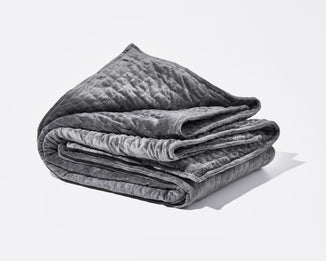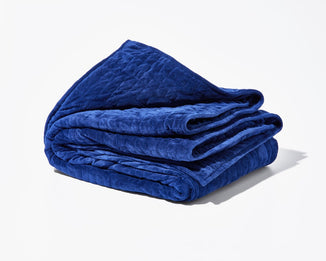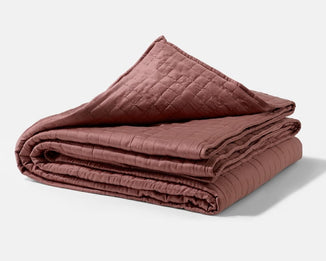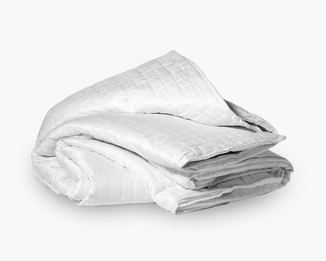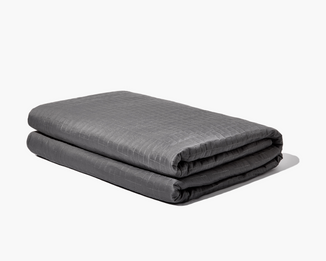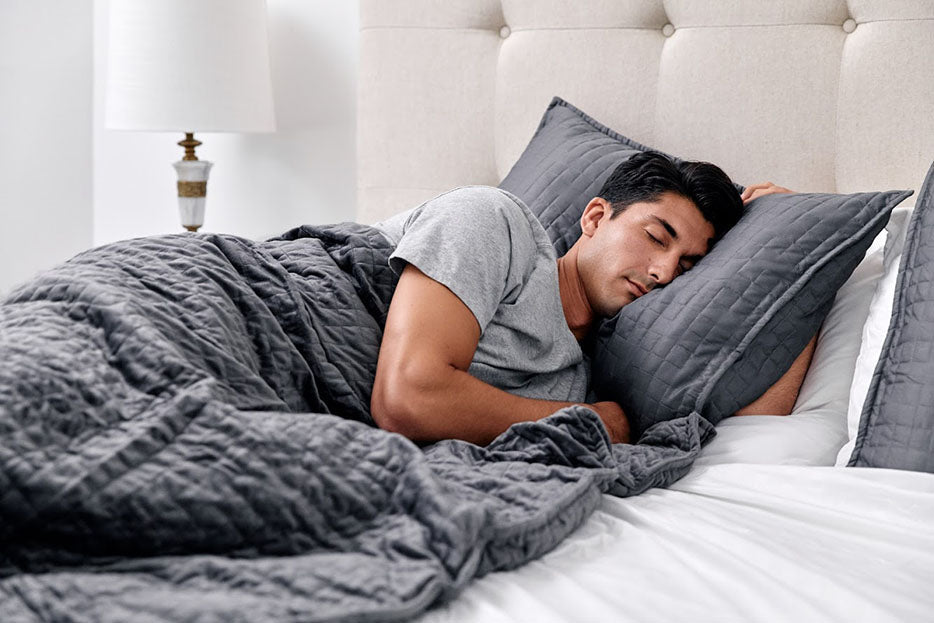
Aug 21, 2023
Which Side Should You Sleep on?

Ever wondered if there’s an optimal way to snooze? Well, it turns out the position and side you sleep on may hold more significance than you think. Join us as we explore side sleeping, a popular yet often misunderstood position. Whether you’re naturally drawn to nestling on your left or your right, understanding the health implications and comfort factors can be a game changer for your sleep quality and general health. From reduced snoring to better digestion, side sleeping can unlock benefits, while also presenting its own set of unique challenges. Don’t worry — we’ll also guide you through the potential downsides, like pressure points or spinal misalignment, and how to mitigate them. Expect a thorough look at this common sleep position, along with helpful insights on sleep aids and tools to enhance your experience. Grab your favorite pillow and snuggle in for a deep dive into the world of side sleeping — your pathway to better rest and well-being.
Find Comfort in a Weighted BlanketUnderstanding Side Sleeping
Side sleeping — perhaps one of the most common positions we adopt for a night of restful slumber. A significant portion of the adult population are natural side sleepers, instinctively curling up on their sides as they drift off into the land of dreams. This position, for many, is more than just comfortable. It offers several health benefits that make it a preferred choice over back sleeping and stomach sleeping.
Unlike back sleeping — which, while beneficial for spinal alignment, can exacerbate snoring and problems with sleep apnea — and stomach sleeping — which can often lead to neck and back pain — side sleeping strikes an impressive balance between comfort and health benefits. Depending on whether you lean left or right in your slumber, these benefits can extend to different bodily functions — something we will delve into later. Furthermore, for those who have spent their nights on their backs or stomachs, a transition to side sleeping might enhance the quality of sleep and positively impact overall health and well-being. In the following sections, we’ll explore why you might want to consider this shift and how you can make it as seamless as possible.

Why Side Sleeping Could Be Your Best Option
Side sleeping offers an array of potential health benefits, making it a compelling choice for many. One of the primary advantages of sleeping on your side is reducing back pain. By maintaining the spine’s natural curvature and evenly distributing body weight, side sleeping can alleviate the strain on your back — potentially leading to fewer mornings with aches and stiffness. It’s also known to help lessen snoring, a boon for sleepers and their partners. For those concerned about gut health, side sleeping, particularly on your left side, has been linked to improved digestion, potentially due to gravity’s assistance in food processing.
Moreover, sleeping on your left side could provide significant relief for those dealing with nighttime heartburn or acid reflux. This position can prevent stomach acid from backing up into the esophagus — helping to mitigate the unpleasant symptoms of these conditions. So, whether you’re aiming for a snore-free night, a backache-free morning or a peaceful sleep with lessened heartburn symptoms, side sleeping could be an optimal choice for a wide range of sleepers.
Keep Things Fresh with a Cooling Weighted BlanketPotential Drawbacks of Side Sleeping
Despite the considerable benefits, side sleeping isn’t without potential drawbacks. One such concern is the development of pressure points, primarily in the shoulders and hips, which can lead to discomfort or even pain over time. In addition, if your head and neck aren’t properly supported, side sleeping can lead to spinal misalignment — another source of potential discomfort. Lastly, habitual side sleepers might notice increased facial pressure, which some believe could contribute to wrinkles over time.
These disadvantages largely depend on your personal comfort and the quality of your sleep aids. For example, an unsuitable mattress might exaggerate pressure point development and spinal misalignment. However, with careful selection of a mattress and pillow suited to your needs, these issues can be effectively mitigated. It’s important to note that side sleeping may not be the best option for everyone. Listening to your body and observing how you feel upon waking are key to identifying what works best for you. Ultimately, like any other sleep position, side sleeping comes with its unique set of pros and cons, and the ideal choice varies for each individual.

Choosing the Best Side: Left or Right?
A common question among side sleepers is which side — left or right — provides the most benefits. Truthfully, the answer is not as straightforward as you might think. It relies heavily on individual health conditions, comfort preferences and even on the direction you naturally tend to turn in your sleep.
Left-Side Sleeping
Sleeping on your left side isn’t simply a matter of comfort — it’s also closely linked to several health advantages. To begin with, left-side sleeping aligns with the natural trajectory of your gastrointestinal tract, promoting smoother digestion. If you frequently experience bloating, constipation or other digestive discomforts, you might discover significant relief simply by sleeping on your left side. The power of gravity in this position helps waste move more effectively from the small intestine to the large intestine.
Expectant mothers can also find particular comfort in left-side sleeping. It’s widely recommended by medical practitioners, as it optimizes cardiovascular function by aiding the heart in pumping blood more efficiently. This position also reduces pressure on the liver, providing added comfort during pregnancy.
People with acid reflux and those who snore can even find respite in left-side sleeping. Resting on your left side can limit the exposure of stomach acid to the esophagus, thus alleviating acid reflux symptoms. Additionally, this position naturally opens the airways, aiding easier breathing and potentially reducing snoring — an added benefit for those with sleep apnea.
Lastly, left-side sleeping may offer relief for individuals with high blood pressure by lessening pressure on the right-sided blood vessels and lowering blood pressure.
Right-Side Sleeping
While the merits of left-side sleeping are substantial, right-side sleeping has its benefits, particularly for those with specific heart conditions.
A 2003 study pointed out that right-side sleeping may help reduce heart pressure. This aspect could prove particularly advantageous for individuals with certain heart conditions. By sleeping on the right side, these individuals may experience more stable blood pressure and heart rate.
It’s essential to understand, though, that personal health needs should drive the choice of sleep position. While left-side sleeping has diverse benefits, right-side sleeping may provide you with the comfort you need if you have a heart condition. Always consult your healthcare provider to tailor your sleep position to your health profile. After all, restful sleep is about finding the position that suits you best.

Transitioning to Side Sleeping: Tips and Techniques
Switching from one sleep position to another can be a bit challenging. It’s not just about telling yourself to sleep on your side. Your body needs to adjust, and muscle memory has to be retrained. However, transitioning to side sleeping can be achieved with the right guidance and determination. Let’s explore some practical tips and techniques to make this process smoother and more comfortable for you.
One of the key factors to consider when transitioning to side sleeping is your pillow. Using the right pillow can make a significant difference in comfort and support. A pillow for side sleeping should properly support your neck and head, aligning them with your spine. It should not be too high or too low — rather, it should maintain the natural curve of your neck. In terms of material, a firm, contouring pillow like memory foam can offer suitable support.
In addition to the right pillow, a body pillow can also be a game-changer for aspiring side sleepers. A body pillow prevents you from rolling over, helping to reinforce side sleeping. Hug the body pillow or place it behind you to create a physical barrier, making it harder for you to turn onto your back or stomach. Furthermore, if a body pillow isn’t readily available, using a rolled-up weighted blanket behind your back can serve as an alternative solution. The goal is to encourage your body to remain in the side sleeping position.
Remember, the transition may not happen overnight. It’s a gradual process. Be patient and consistent, and soon, your body will start to accept side sleeping as the new norm. With these techniques, you’re well on your way to experiencing the potential benefits of side sleeping.
Enhancing Your Side Sleeping Experience
Choosing the right sleep aids and tools can greatly enhance the side sleeping experience. This can involve selecting the right mattress type, pillows, weighted blankets and even infrared sauna blankets. Each of these items brings unique benefits and can cater to the specific needs of side sleepers.

Firstly, selecting the right mattress is crucial. Memory foam, latex and hybrid mattresses are typically the most suitable for side sleepers. These mattresses contour to your body’s shape, providing pressure relief and alleviating common discomforts like back, hip and shoulder pain. Mattress firmness level should also be considered. Many side sleepers find softer mattresses more comfortable, although a medium to medium-firm bed may also suffice for those needing extra support. The best mattress for a side sleeper depends on individual preferences, body type and budget, and factors such as firmness level, material and support should all be considered.
Equally important is the choice of pillow. For side sleepers, the best pillows offer enough cushioning for the head and neck, keeping them elevated without sinking too low, and maintaining the shoulders and head in a comfortable position. Some key features to look for include loft (the pillow’s height or thickness), support (ensuring alignment of the head, shoulder, neck and spine), fill material (options such as memory foam, latex and buckwheat hulls are optimal) and shape (various specialty pillows are available to position your body effectively during sleep).
Next, a weighted blanket can significantly enhance the quality of side sleep. Weighted blankets employ Deep Touch Pressure to induce a feeling of relaxation and stress relief. They can improve sleep quality, especially for side sleepers who struggle with falling and staying asleep. Furthermore, a weighted blanket can help alleviate restless legs syndrome, commonly experienced by side sleepers. Weighted blankets come in a variety of sizes, from twin to king, tailored to suit individual needs and preferences, providing an all-around cozy and calming sleeping experience. For those who tend to run hot or reside in warmer climates, a cooling weighted blanket is designed to provide the comforting weight without overheating, offering you season-long or year-round tranquility.
Lastly, the infrared sauna blanket can be a game-changer in sleep quality, regardless of your preferred sleep position. Powered by FAR infrared technology, these blankets can provide a soothing, spa-like experience in the comfort of your home. FAR infrared energy penetrates deep into the body, promoting circulation, aiding muscle recovery and helping you relax before bed. Regular use of an infrared sauna blanket can potentially help you drift into a deeper, more restorative sleep. As always, remember that individual preferences and health considerations should guide your choice of sleep aids and tools.

Wrapping Up Your Side Sleeping Journey
Whether you’re transitioning to side sleeping or choosing between your left or right side, it all hinges on individual health requirements and personal comfort. As major shifts in sleep routine may impact pre-existing medical conditions, it’s wise to seek professional medical advice before making any decisions that may impact your health. In the quest for quality sleep — a keystone of holistic health — your comfort reigns supreme. This comprehensive review of side sleeping equips you with the knowledge to make an enlightened choice. While shifting sleep positions may require a modicum of patience and time, the right sleep aids coupled with determination can streamline this journey. Cheers to side sleeping — where no matter which side you choose, you’re always waking up on the right side of the bed!
Your use of this website, its content, and any products obtained through this website is at your own risk. This website, its content, and any products obtained through this website are provided on an “as is” basis, without any warranties of any kind, either express or implied, including warranties of merchantability, infringement of intellectual property, or fitness for any particular purposes. No warranty or representation is made with respect to the completeness, reliability, quality, or accuracy of this website or its content. This website, its content, and any products obtained through this website do not constitute medical treatment and is not a substitute for a medical examination or diagnosis. If you are dealing with a health condition check with your health care provider before using. This website may contain affiliate links that allow us to earn a commission on purchases made through such links. We may accept forms of advertising or sponsorships in connection with this website. There might also be paid topic insertions. We may accept and keep free products, services, and other forms of compensation from others.
Image Credits
Summerdise Studio/Shutterstock.com
